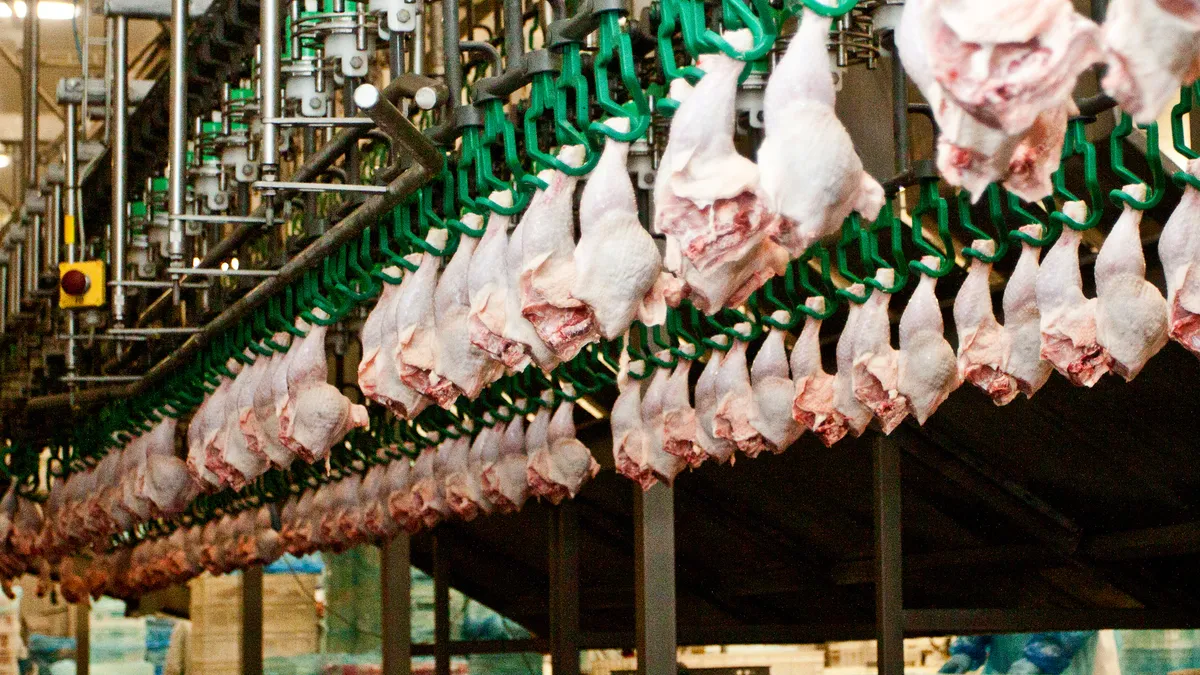Although many of the agriculture industry's legislative priorities stalled last year, expect a flurry of political activity in 2024 as the Biden administration scrambles to woo rural voters ahead of the November election.
While passing a farm bill is undoubtedly the biggest priority for this year, the U.S. Department of Agriculture is also poised to move full speed ahead on other priorities such as fostering competition and expanding opportunities for climate-smart agriculture.
"In the last year of the first term and in line with election season, every agency — USDA included — is going to be looking to push their priorities," said Kristi Boswell, an attorney with Alston & Bird’s legislative and public policy group.
As the Biden administration looks to finalize some of its key initiatives, lawmakers also face mounting pressure to address farmer concerns, particularly the H-2A visa program.
Here's a look at some of the policy debates and regulations to watch in 2024.
Race to finish the farm bill
The pressure is on to pass a farm bill this year ahead of the November election and before the retirement of Senate Agriculture Chair Debbie Stabenow, who is leaving Congress at the end of her term in January 2025.
After approving a one-year extension last fall, Congress has until Sept. 30 to pass the $725 billion spending package that oversees vital farm programs in addition to the Supplemental Nutrition and Assistance Program.
However, lead negotiators are still struggling with the same partisan divides and funding constraints that delayed progress in 2023. A minority of hard-right Republicans continue to hold up progress on the farm bill, stymieing any plan that would increase the budget even for popular agriculture programs.
Farm bill leaders are also up against a tight floor schedule. The legislative calendar is shortened in election years, and farm bill consideration has been pushed back amid a scramble to reach a federal spending deal for government agencies.
In some respects, the looming election could galvanize lawmakers to reach a bipartisan agreement, especially as Republicans looking to defend their seats try to deliver wins for rural constituents. However, there could now be some incentive among Democrats to extend the farm bill even further: If the party is able to flip the House in November, legislators will likely be able to find more funding for their farm initiatives.
"I think that's in the back of everyone's mind as we're in this really hard funding debate," said Boswell. "It shows how the dynamics are especially kind of unique and challenging in this farm bill cycle."
Still, agriculture stakeholders are pushing for a farm bill as soon as possible to provide certainty and predictability to farmers who depend on the loans and grants governed by the spending package.
"We are imploring Congress to take urgent action to expedite the farm bill," said RJ Karney, senior director of public policy at National Association of State Departments of Agriculture, which represents agriculture interests across U.S. states. "Farms need stability. Individuals who rely on nutrition programs need certainty. What the farm bill does is to secure that commitment for both."
Farmers push for H-2A visa reform, limits on foreign landholdings
Crushing labor costs and rising foreign ownership of U.S. farmland are among the top concerns among producers, with both issues set to get considerable attention in Congress and at the USDA.
As an acute labor shortage and rises in H-2A visa wages leave more producers at their breaking point, stakeholders are amplifying calls to majorly reform the seasonal farm worker program.
The “Adverse Effect Wage Rate,” or the required wage that farms must pay H-2A workers, rose to a national average of $17.55 an hour in 2024, a more than 5% increase year over year. That's compared to roughly $11 in Canada and $1.50 in Mexico.
Mounting expenses are proving too much for some producers, who already have changed their operations or shut down farms entirely. Farmers are now pushing for a freeze in H-2A visa wages in addition to reform that would allow producers to use temporary workers year-round instead of on a seasonal basis.
“The fresh produce supply chain cannot survive, let alone thrive, under the constant barrage of regulatory burdens and cost increases imposed on our industry,” Cathy Burns, CEO of the International Fresh Produce Association, said in a statement. “Absent a comprehensive solution to agricultural workforce challenges, Congress must act immediately to provide wage relief to producers before we lose more farms in America.”
Beyond H2-A visas, USDA and Congress are facing mounting pressure to limit the farmland owned by foreign adversaries such as China. Flaws in the data collection process have made it difficult for the USDA to enforce disclosure rules or even properly report how much land is owned by foreign interests.
"I think every family around the kitchen table is worried about it," said Boswell. "USDA is definitely going to be looking at what they can do and they're going to be getting pressure, frankly, to make sure that they are collecting as much of that information as possible."
New rules on competition, product labeling
The USDA is preparing a regulatory sprint in 2024 to finalize several key priorities cracking down on anti-competitive practices by large producers.
The agency plans to significantly update the 100-year-old Packers and Stockyards Act, clarifying what practices or conduct are considered a violation of the law, according to a statement of regulatory priorities. It also seeks to supplement a proposal made in 2022 that prohibits unjust discriminatory conduct against producers.
Those changes would come on top of transparency rules set to go into effect in February requiring meat companies to lay out grower's costs associated with taking on a contract.
"It will be interesting to see when that rule goes into effect and if it changes the industry," said Audry Thompson, staff attorney with Penn State's Center for Agricultural and Shale Law. "While behavior may change, where the rubber hits the road is how it's going to be enforced."
Beyond competition, USDA is looking to address a number of labeling concerns within the meat industry. The agency's Food Safety and Inspection Service plans a rule better defining how cell-cultivated meat products should be labeled, and it's also preparing to provide clarity on when the voluntary "Product of USA" label can be used.
New rules set to take effect in March will also add new requirements for producers that want to use the "USDA Organic" label on their products. The changes are the biggest updates to the organic program since the 1990s and are meant to restore consumer confidence in a sector where fraud is rampant.
"You're going to see USDA wanting to make sure they've checked all those boxes at the end of the first term," Boswell said.



















